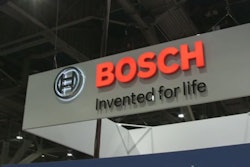1. Communicate with your chosen equipment supplier. Your supplier needs all the pertinent information about the product, its characteristics, and the film you plan to use. Especially if it is a new product, dimensional specs and variations need to be addressed up front.
2. Ask plenty of questions. If you’ve always done manual wrapping, and this is your first flow wrapper, you may not even know what questions to ask. Back-and-forth visits between your plant and the supplier’s facility will acquaint them with your particular products.
3. Do your best to submit samples for validation. Baked goods, in particular, vary in dimension by their very nature. Muffins are top-heavy, icing complicates things, and not every bagel is the same size. Submit as many relevant sample variations as possible to the supplier: fresh-baked, after shipping, frozen, etc.
4. Do your preinstallation prep work. As the packager, you have some preinstallation work to do after the contract is signed and before the truck pulls up at your door with the new machine. If your supplier assigns you a project manager, so much the better. If not, here are some things to remember:
• All utilities need to be ready for the new machine: electricity, air, water, steam, drains, etc. The morning of delivery is not the time to call an electrician.
• Prepare the area where the flow wrapper will be placed, and remove any obstacles in the path of the machine, from the truck to its new location.
• Make sure you have a forklift, or arrange to rent one. As one supplier commented, “This is not a toaster that you just plug in.”
• A conference-call “walk-through” with the supplier, before the machine is shipped, can prevent any last-minute snags.
5. Perform a Factory Acceptance Test at the supplier’s facility. Take the time, and assign the personnel, to do a proper FAT at the supplier’s facility, with the film you plan to use. These evaluations can help identify necessary tooling changes or other considerations and determine the best procedures for maximizing equipment efficiency. Work out where operators will be stationed, make sure conveyors will fit and are laid out correctly, and perform any necessary electrical inspections, USDA sanitary inspections, etc. An additional benefit: you send to attend the FAT will feel responsible and “own” that piece of machinery. (See "Roadmap for a successful form/fill/seal Factory Acceptance Test".)
6. Don’t neglect operator training. In general, the use of flow-wrapping machinery requires staff with select skills to maintain the equipment. Are adequate personnel available to service the equipment once it’s installed? If not, the advantages of such equipment could be lost in downtime. It’s much easier for operators to learn about the new machine in the supplier’s facility, during the FAT, because there are fewer distractions. It’s also much more convenient than trying to schedule training time at your plant after installation. Take the time to make sure your operators and technicians know how the flow wrapper should work, and know what to do if something breaks.
Liked this article? Download the entire playbook here.


























